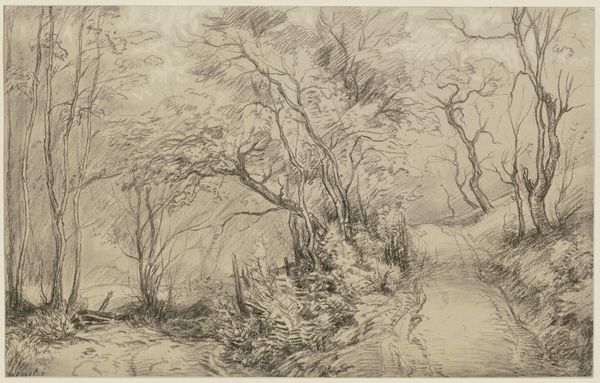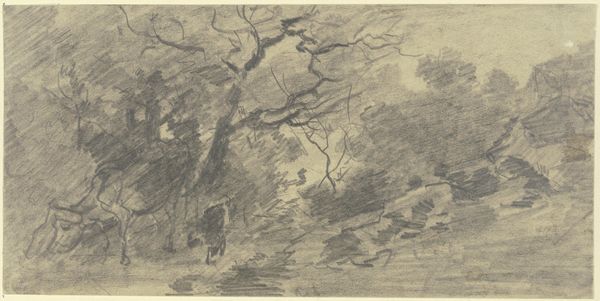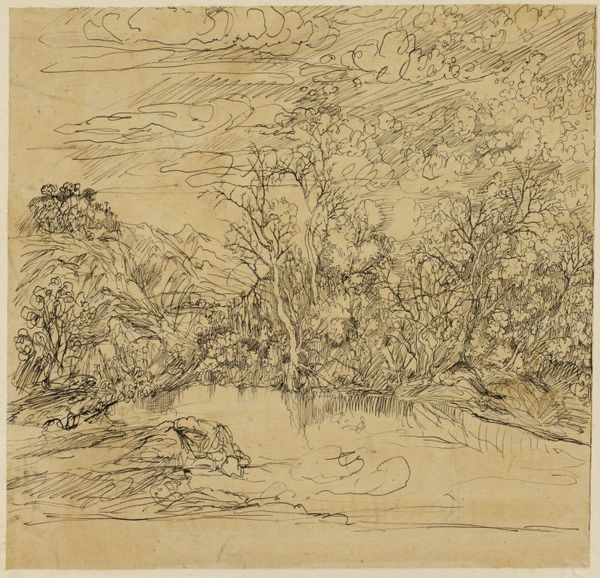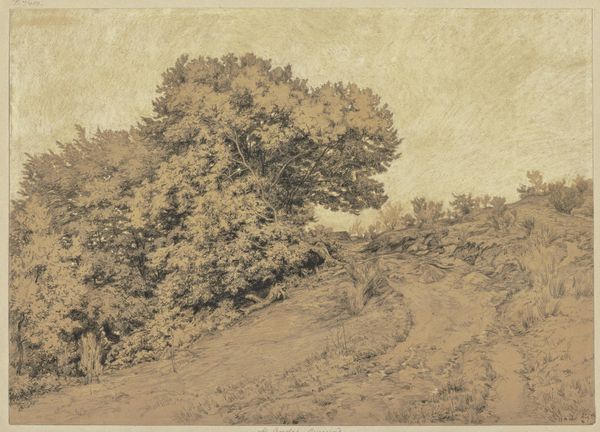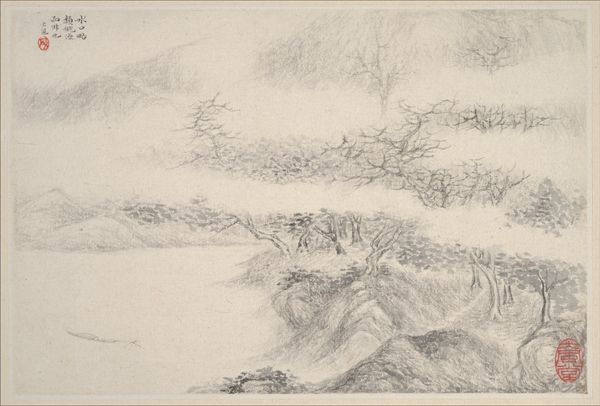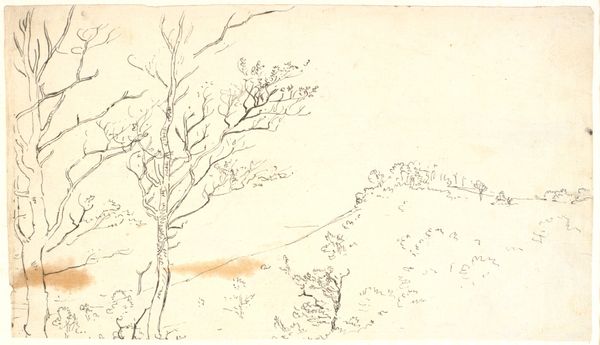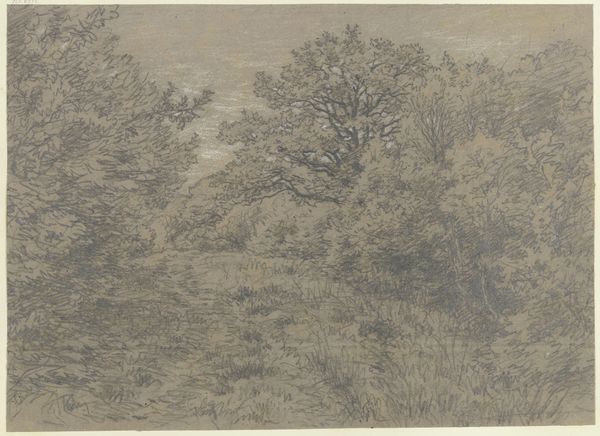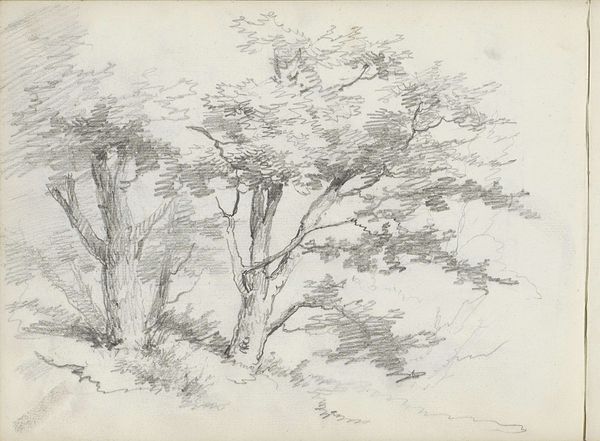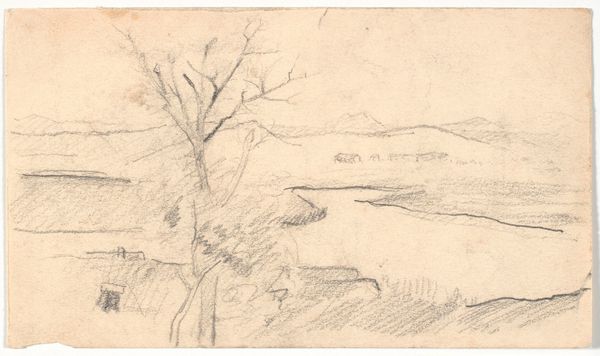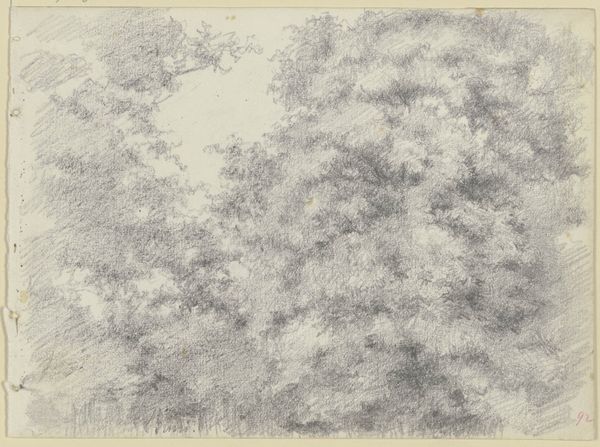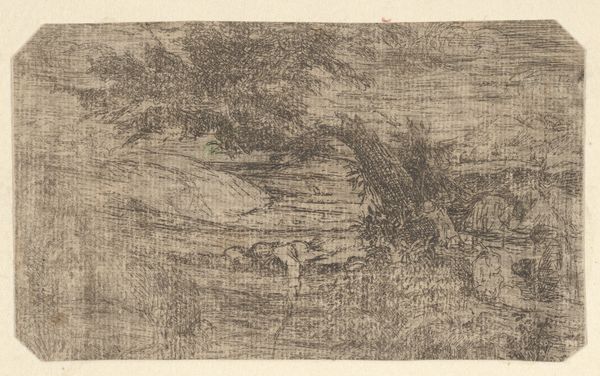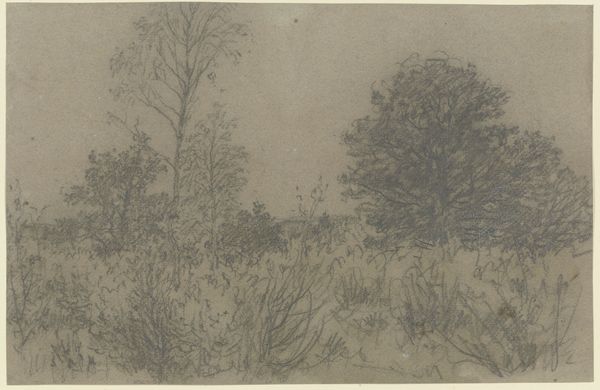
drawing, plein-air, paper, pencil, chalk, charcoal
#
drawing
#
plein-air
#
pencil sketch
#
landscape
#
etching
#
paper
#
pencil
#
chalk
#
watercolour illustration
#
charcoal
Copyright: Public Domain
Editor: Here we have Max Liebermann's "Alder at the edge of a meadow," made with chalk, charcoal, pencil, and paper. It feels quite melancholic to me, almost haunting with its dark, smudged lines. What do you see in this piece? Curator: What I see is a dialogue about land ownership and access, or rather a lack of thereof, and an ode to resilience of nature to human ambition. Consider the political climate in Germany during Liebermann's time. He worked when modernism was gaining momentum, so what did painting “en plein air,” focusing on ordinary landscapes mean? Editor: I suppose choosing such an unassuming scene as a subject could be seen as a sort of quiet rebellion. It wasn't the grand, heroic painting the Academy liked, but everyday life? Curator: Exactly! It's a democratic approach, celebrating the beauty found in common, shared spaces. Now look closer – notice how the tree is rendered with such dynamic lines. Think about the historical context: The rapid industrialization pushed people from rural land. Liebermann is using a seemingly simple landscape to draw awareness to those displaced, but he does this with such careful intention. This way, we, as observers are encouraged to appreciate these disappearing landscapes and become protective of the world surrounding us. Do you notice it now? Editor: I see the contrast between the rough, almost aggressive strokes of the tree and the softer, faded field more clearly. It does give a new depth to it. Curator: And this prompts a deeper discussion: Whose voices are prioritized in landscape painting, who is allowed to claim space and depict their own land, their own reality. So art can question these dominant narratives through quiet observations. Editor: It’s a powerful statement when you frame it that way! I was only reacting to the emotional tone, but now I see how deeply embedded the social commentary really is. Curator: Exactly, and that’s where art truly begins: when its interpretation transforms into actions and challenges in our daily realities.
Comments
No comments
Be the first to comment and join the conversation on the ultimate creative platform.
